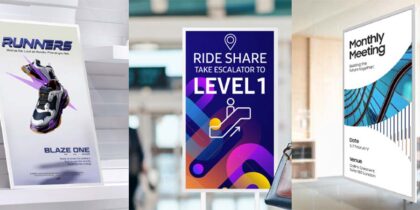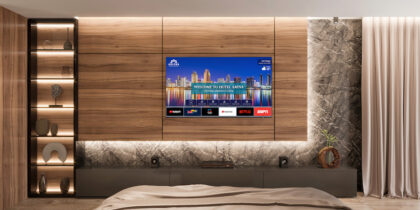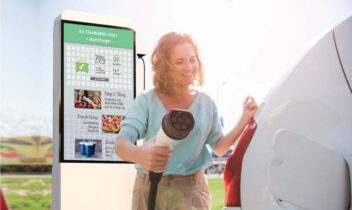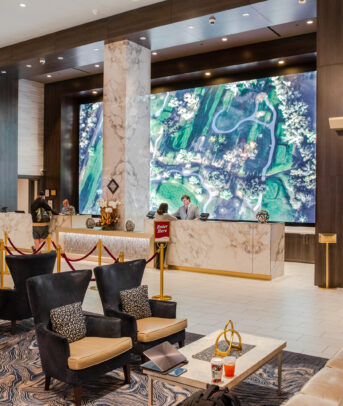In today’s competitive market, hotels are striving to be more than just a place to spend the night, providing guests with a rich hospitality experience that improves on everyday life. This focus on differentiation makes the hospitality industry an ideal place to implement augmented reality (AR) and beacon technology, two of the latest and greatest hospitality trends.
Hotels can offer a personalized experience leveraging devices already in their guests’ pockets, while also utilizing these technologies to increase upsells and marketing objectives. But it’s essential that hotels use beacons and augmented reality thoughtfully, so that the technology expands upon the experience already created by the physical hotel, rather than complicating it for guests.
Augmented Reality
While similar, augmented reality enhances the guest’s current environment, whereas virtual reality (VR) uses technology to create a different, new environment. Personalized experiences can be created utilizing mobile devices, including smartphones, tablets and wearables. Using 3D programs, developers create augmented reality apps that layer images or other content over the current environment. For example, the yellow first-down line displayed on televised football fields is a basic AR projection.
Use of augmented reality is expected to proliferate, with Digi-Capital estimating that the augmented reality industry will rapidly grow to $120 billion in revenue by 2020. The opportunities for integrating augmented reality are endless. Common applications include seeing pictures or video when a smartphone is swiped over a restaurant menu, or creating custom dining experiences on the menu with themes projected from a device. Interactive maps of the city are another service hotels can provide for guests with augmented reality, complete with location markers of popular sites, shuttles and other transportation options.
Creative uses of augmented reality are popping up at resorts and hotels of all sizes and types. Holiday Inn was an early adopter, utilizing AR during the 2012 Olympics and Paralympics in London to allow guests to take pictures with star athletes. Guests at the Shangri-La Hotel can enhance what they’re seeing on the London skyline outside their windows with augmented reality on a tablet in every room. Marriot also used the technology with Samsung’s Gear VR, so guests could travel to different places around the globe as part of their VR Postcards service.
Beacon Technology
While augmented reality is “pull” technology, where users request the experience, beacons take the opposite approach, pushing messages and information based on the location of the guest. Beacons are devices placed in strategic locations, such as a column or hallway, that send area-based information to a device. With beacons, hotels can send marketing messages and information the guest may want, such as information about tee-time availability if they’re walking toward the golf club, or drink specials if they’re returning to the hotel from a day of sightseeing.
Beacons can be applied in many settings, and are prevalent in retail. Hospitality Net reported that Marriott utilizes beacons in 14 locations to send food and spa discounts to guests near these amenities, and guests staying at Starwood Hotels enjoy more efficient check-in and housekeeping services thanks to this technology, which is installed at 30 of their locations. According to Hospitality Technology, guests at The James Hotels can take a personalized tour of the art collection customized to their location through beacons.
When implementing beacons, hotels should consider what questions guests typically ask at specific locations and brainstorm the most effective and interesting way to proactively provide this information. Think about typical guest patterns for purchasing, as well, and design push marketing based on the location in the hotel where guests often make a purchasing decision, such as the menu board outside a hotel restaurant.
Hoteliers implementing these technologies before they become mainstream can quickly differentiate themselves from other properties. However, owners and operators embracing a wait-and-see approach may soon find themselves playing catch-up to create the experience customers will soon come to expect.
Learn more about the potential applications of beacon technology, and how your business can leverage it.






